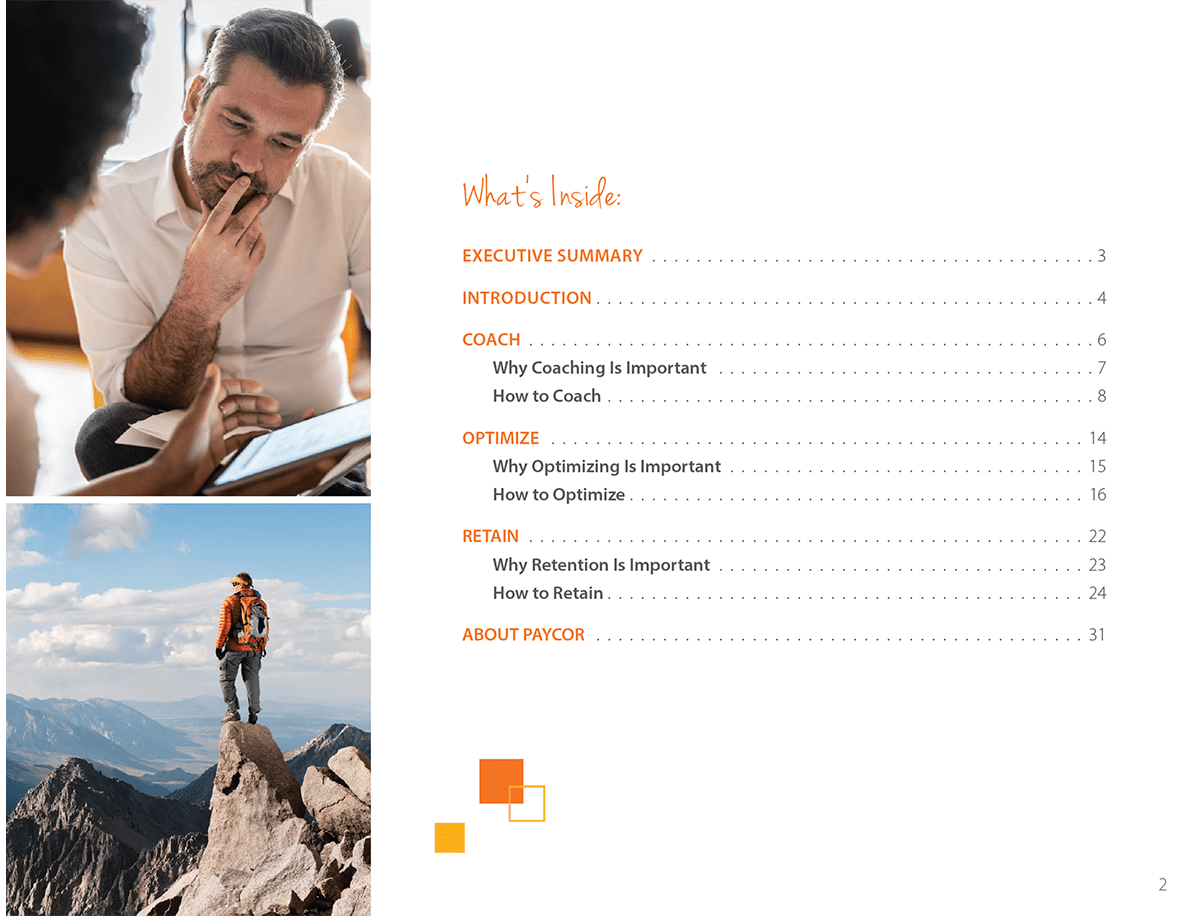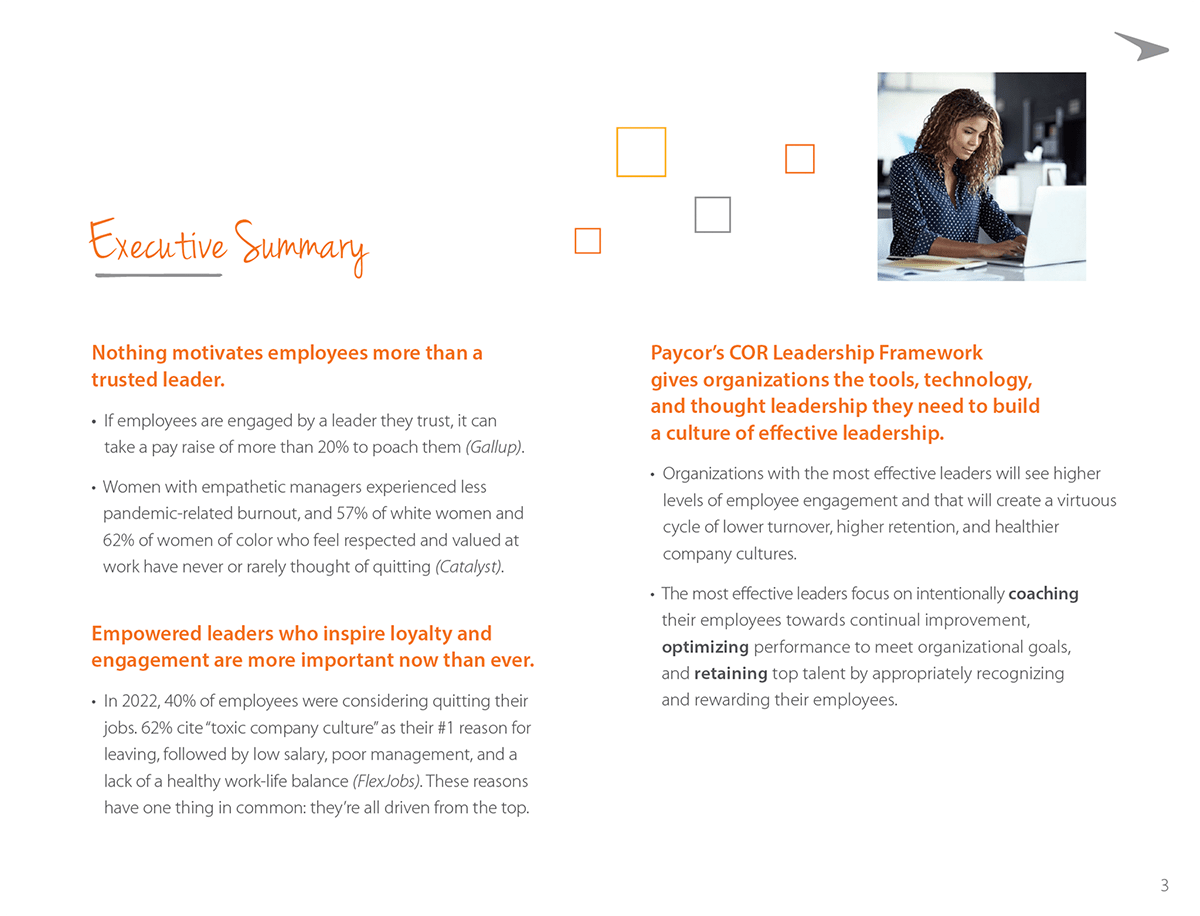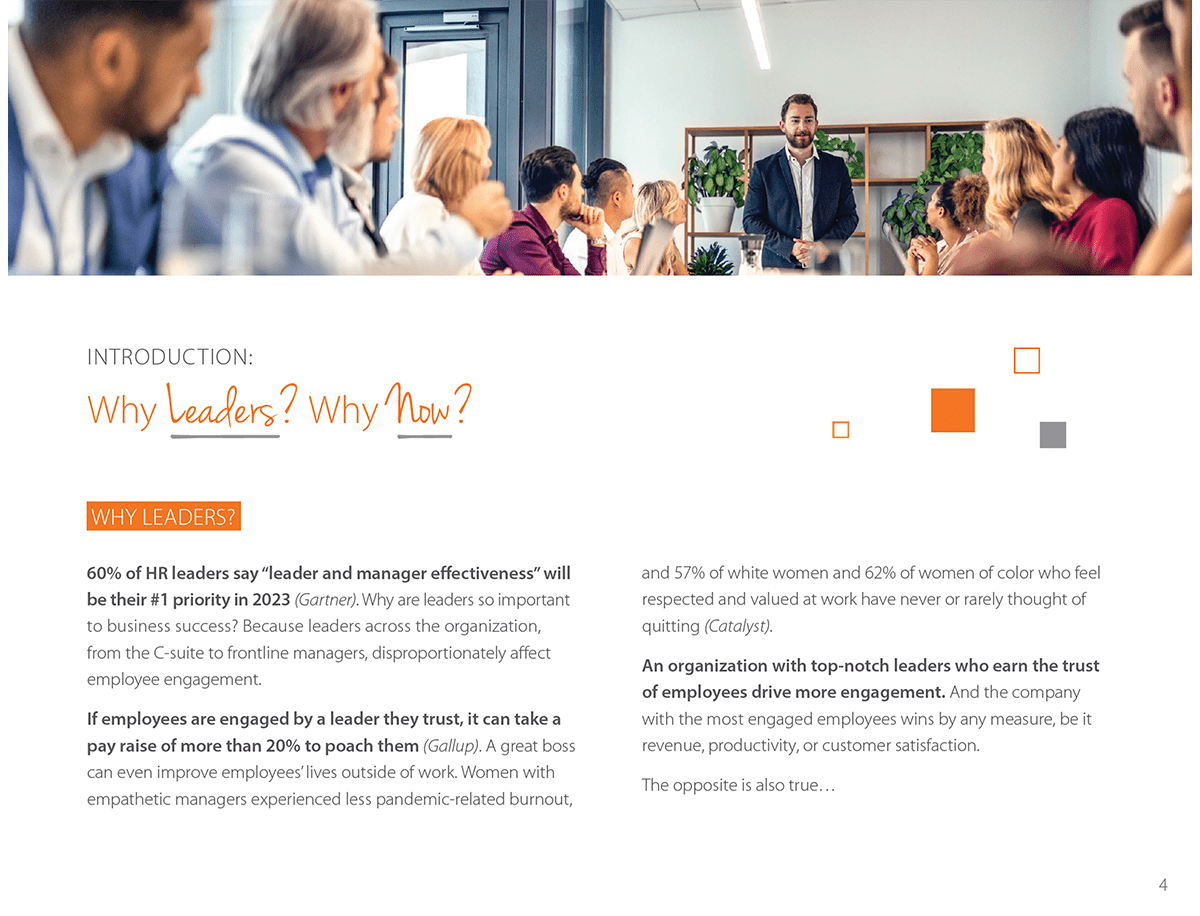
Why Leaders? Why Now?
60% of HR leaders say “leader and manager effectiveness” is their #1 priority in 2023 (Gartner). Why? Because leaders across the organization disproportionately affect employee engagement.
In the last 6 months, 25% of employees resigned citing “toxic company culture” as their #1 reason for leaving, followed by low salary, poor management, and unsustainable work-life balance (McKinsey). What do all those reasons for leaving have in common? It all comes from the top.
Download our Guide to learn:
- Why intentional coaching is key. And how to do it.
- How to optimize performance to meet organizational goals.
- The best ways to recognize and reward employees to retain top talent.
- Practical plans you can use today.







